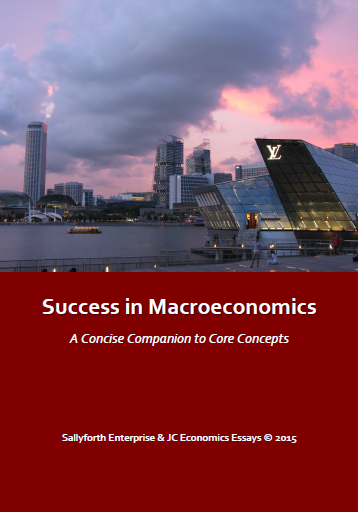The circular flow of income is the flow of transactions between households and firms in both the product and factor market. In order to be more realistic, we consider the circular flow of income in an open economy with four sectors, namely households, firms, government and the foreign sector.
[Include the diagram for circular flow of income in an open economy]
From the above figure, we can see that the money in an economy maintains approximately the same at all times. This is because people in the households work for firms and are given a salary which is their income. In return, the households use the income they earn to buy their daily necessities or to satisfy their wants by purchasing goods and services from firms. However, there are also withdrawals and injections for an open economy. Withdrawals (W) include savings (S), taxes (T) and money spent on imports (M) while injections (J) include investment (I), government expenditure (G) and money received from the sale of exports (X). [W = S + T + M; J = I + G + X]
Fiscal policy makes use of the G, C and I components. It injects money into the economy either through government expenditure or government investments, thus having more money in the circular flow of income. When G is increased, there will be more spending on building the infrastructure, education or providing subsidies. These will result in more jobs for the people as construction workers will now have a job to build something and hire more workers to help if the firm is short of labour. As for education, the Ministry of Education may require more teachers, thus having more jobs, or they will build more schools and need more supporting staffs as well. These will certainly help in demand-deficient unemployment.
When there is demand deficient unemployment, aggregate demand (AD) falls, resulting in national income (NY) to fall as well. The fall in AD shows that there has been a lack of demand in consumption, therefore not requiring as many workers as before, resulting in many people losing their jobs. By increasing G as said earlier, it will push AD up again, getting more people to be employed.
Also, by providing subsidies for retraining of workers, government can solve the problem of structural unemployment. Structural unemployment happens when there are people who are willing to work yet they do not have the right skills for the jobs in the market. These subsidies can serve as an incentive for them to retrain themselves to have the right skills for the jobs in sunrise industries.
By increasing investments, the government is increasing the aggregate supply (AS), therefore preventing the economy from reaching a bottle-neck situation where it is close to full-employment. It will also create more jobs for the people in future.
Increasing investments also make business look more optimistic as they have more money to work with currently. They can invest on research and technology which will provide more jobs for some people and slowly the company may expand and hire more people, thus reducing unemployment.
Since AD = C + I + G + (X – M), when a sum of money is injected into the economy, it triggers the multiplier process. The multiplier, k , is dependent on the marginal propensity to withdraw (MPW), which is make up of marginal propensity to tax (MPT), marginal propensity to import (MPM) and marginal propensity to save (MPS). [MPW = MPT + MPM + MPS]
Assuming that the government injects $100 million into the economy for investment on companies and assuming k to be 0.5, the companies might make use of the $50 million to hire more workers. The process does not stop here as workers will then use $25 million to buy necessities and satisfy their wants therefore increasing C. The process will continue until change in NY is equivalent to k times of amount of money injected, which in this case is $50 million.
The multiplier process shows that people have more money at hand and are more willing to consume. Increase in consumption increases AD as well, resulting in firms producing more outputs and requiring labour, thus reducing unemployment.
These show that fiscal policy provides injections that expands the circular flow of income, allowing AD and AS to increase so as to provide more jobs and reduce unemployment.
JC ECONOMICS ESSAYS: Economics tutor's comments - Note: This contribution was written by an Economics student who has already graduated from Junior College, who attained a grade A at H2 Economics at the A levels, but it is the student's own opinions and analytical, essay writing methods, and should be read with an critical, analytical, observant eye. As the student has graduated from junior college already, has she made some simple mistakes? Has she written some arguments and phrases less clearly? Think about those things as you read, and always read essays with a critical mind. What can be done to develop this essay further? What skills can you bring to the table, to make this economics essay the best that it can be? What other examination techniques, skills, economics content, or economics knowledge could you use to buttress the arguments? Think always of how to improve your essays and cross refer to other essays, to read and see the best essays, or the good essays, to improve on your writing, skills, and knowledge. Thanks for reading.



